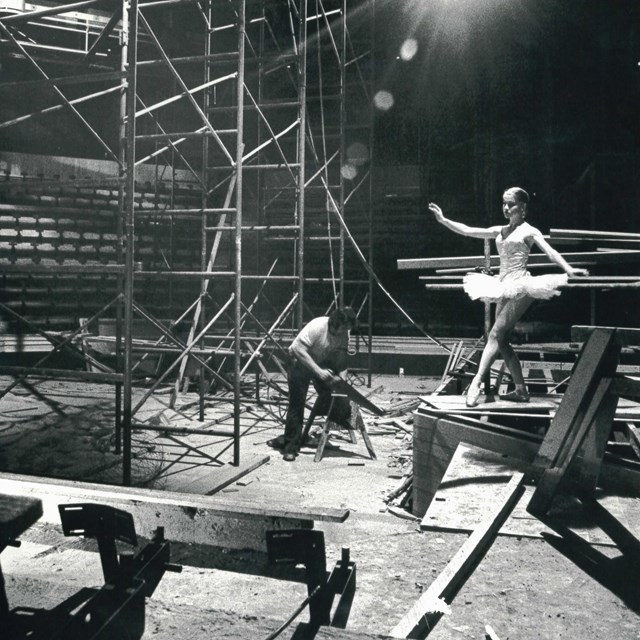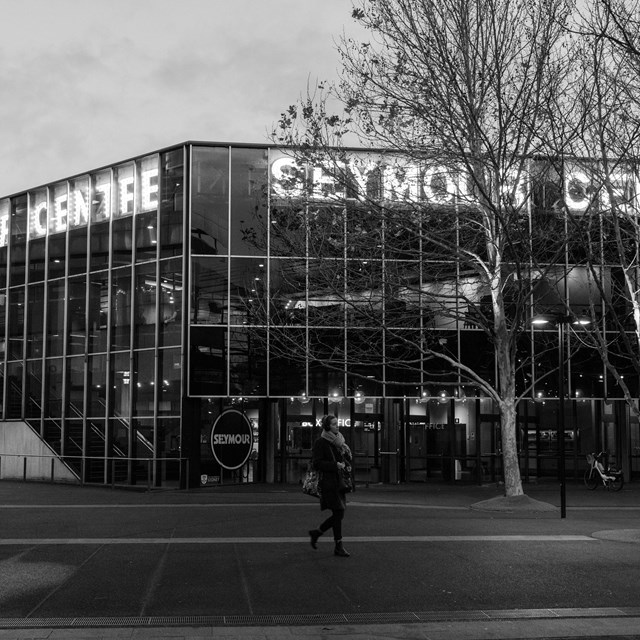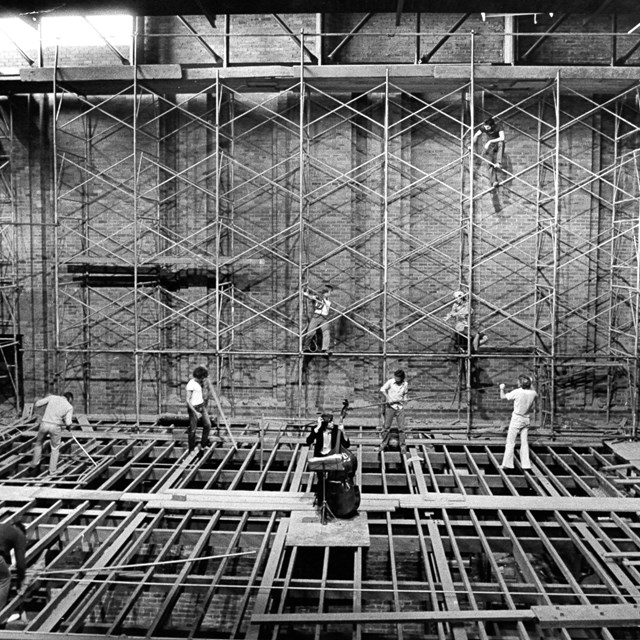Theatre throughout the ages
How the art form we know and love today came to be
Theatre has been an integral form of cultural expression for at least 2500 years—but have you ever wondered how it all began?
Yesterday was World Theatre Day, and to celebrate, we thought we'd take a look at some of the defining moments in the history of theatre—the moments that shaped this inimitable art form into the one we know and love today.
Grecian roots
Like many things, the roots of modern theatre can be traced back to ancient Greece. In the sixth century BC, Athens began hosting an annual festival for the god of wine and harvest, Dionysus, and these celebrations eventually came to include a playwriting competition, with pieces performed for the public and prizes on offer for the best new work.
Initially, Greek performances didn’t feature multiple actors like we’re familiar with today. Rather, writers would read their works aloud, almost like an old-school poetry slam, and it was only later that actors were added to the mix. In fact, the first actor in the Western world was likely a Greek poet named Thespis, who changed the game by appearing on stage in character circa 532 BC.
It was also during this time that legendary playwrights like Sophocles and Aristophanes were putting pen to paper, crafting prototype tragedies, comedies, and satires (then known as satyrs, and originally written to poke fun at classic Greek myths and legends).
That's amore
As trade and travel ensued, theatre spread from Greece to neighbouring countries, finding fresh audiences just as enamoured with this thrilling new art form as the Greeks were.
Italy in particular began to develop its own unique theatrical traditions, and as the Roman Republic evolved into the mighty Roman Empire, Italy became known as the pinnacle of European culture, with theatre at the heart of this illustrious reputation.
Though early Italian performances were adaptations of Greek productions, Roman playwrights soon began to produce their own original works, and theatre became so integral to Italian life and culture that the Roman Republic established the first ever writers and actors guilds. Theatre also grew popular in Europe more broadly, and would remain a key part of the continent’s cultural landscape until the Middle Ages—when the church intervened.
The curtain falls—and rises again
In the early Middle Ages, influential Christian churches across Europe began to denounce the theatre, saying it spread dangerous, pagan messages and encouraged sinful behaviour. Performance was banned and actors banished, and theatre largely disappeared from public life.
But once stripped of its so-called debauchery, the church realised that theatre could be a powerful vehicle for Christianity, and ironically, the art form was soon resurrected to promote Christian morals and encourage faith-based living.
By 1000 CE, sentiment had shifted again, and theatre began to extend beyond the confines of church walls, steadily re-establishing itself across Europe. Many productions were adapted from liturgical dramas, though it wasn’t long before playwrights in London, Spain, France, and Germany were writing their own works on bold new themes, and by the 15th century, audiences were enjoying comedy again—and even burlesque.
New styles emerge
In the 16th century, in a paradoxical twist and a defining moment in the development of theatre, religious dramas were banned throughout Europe, pushing countries to fill the gap with more of their own unique genres and theatrical traditions.
The ban saw countless playwrights reinvigorate old theatrical customs and experiment with new styles, eventually birthing the classic theatre movements to which we still pay homage today, including Elizabethan theatre, commedia dell’arte, Spanish Golden Age theatre, Restoration Comedy, and much later, Broadway theatre.
Today, theatre continues to evolve, and each year we see talented playwrights, actors, and directors experiment with new concepts, ideas, and styles. VR theatre, anyone? We can’t wait to see what lies in store for the future of theatre, and we’re so pleased to celebrate World Theatre Day with you.
28 March 2022
From outstanding theatre, music and dance to innovative shows for kids, you’ll find something for everyone at the Seymour. Click below to see what’s on.
See What's OnTheatre has been an integral form of cultural expression for at least 2500 years—but have you ever wondered how it all began?
Yesterday was World Theatre Day, and to celebrate, we thought we'd take a look at some of the defining moments in the history of theatre—the moments that shaped this inimitable art form into the one we know and love today.
Grecian roots
Like many things, the roots of modern theatre can be traced back to ancient Greece. In the sixth century BC, Athens began hosting an annual festival for the god of wine and harvest, Dionysus, and these celebrations eventually came to include a playwriting competition, with pieces performed for the public and prizes on offer for the best new work.
Initially, Greek performances didn’t feature multiple actors like we’re familiar with today. Rather, writers would read their works aloud, almost like an old-school poetry slam, and it was only later that actors were added to the mix. In fact, the first actor in the Western world was likely a Greek poet named Thespis, who changed the game by appearing on stage in character circa 532 BC.
It was also during this time that legendary playwrights like Sophocles and Aristophanes were putting pen to paper, crafting prototype tragedies, comedies, and satires (then known as satyrs, and originally written to poke fun at classic Greek myths and legends).
That's amore
As trade and travel ensued, theatre spread from Greece to neighbouring countries, finding fresh audiences just as enamoured with this thrilling new art form as the Greeks were.
Italy in particular began to develop its own unique theatrical traditions, and as the Roman Republic evolved into the mighty Roman Empire, Italy became known as the pinnacle of European culture, with theatre at the heart of this illustrious reputation.
Though early Italian performances were adaptations of Greek productions, Roman playwrights soon began to produce their own original works, and theatre became so integral to Italian life and culture that the Roman Republic established the first ever writers and actors guilds. Theatre also grew popular in Europe more broadly, and would remain a key part of the continent’s cultural landscape until the Middle Ages—when the church intervened.
The curtain falls—and rises again
In the early Middle Ages, influential Christian churches across Europe began to denounce the theatre, saying it spread dangerous, pagan messages and encouraged sinful behaviour. Performance was banned and actors banished, and theatre largely disappeared from public life.
But once stripped of its so-called debauchery, the church realised that theatre could be a powerful vehicle for Christianity, and ironically, the art form was soon resurrected to promote Christian morals and encourage faith-based living.
By 1000 CE, sentiment had shifted again, and theatre began to extend beyond the confines of church walls, steadily re-establishing itself across Europe. Many productions were adapted from liturgical dramas, though it wasn’t long before playwrights in London, Spain, France, and Germany were writing their own works on bold new themes, and by the 15th century, audiences were enjoying comedy again—and even burlesque.
New styles emerge
In the 16th century, in a paradoxical twist and a defining moment in the development of theatre, religious dramas were banned throughout Europe, pushing countries to fill the gap with more of their own unique genres and theatrical traditions.
The ban saw countless playwrights reinvigorate old theatrical customs and experiment with new styles, eventually birthing the classic theatre movements to which we still pay homage today, including Elizabethan theatre, commedia dell’arte, Spanish Golden Age theatre, Restoration Comedy, and much later, Broadway theatre.
Today, theatre continues to evolve, and each year we see talented playwrights, actors, and directors experiment with new concepts, ideas, and styles. VR theatre, anyone? We can’t wait to see what lies in store for the future of theatre, and we’re so pleased to celebrate World Theatre Day with you.
28 March 2022
From outstanding theatre, music and dance to innovative shows for kids, you’ll find something for everyone at the Seymour. Click below to see what’s on.
See What's On



